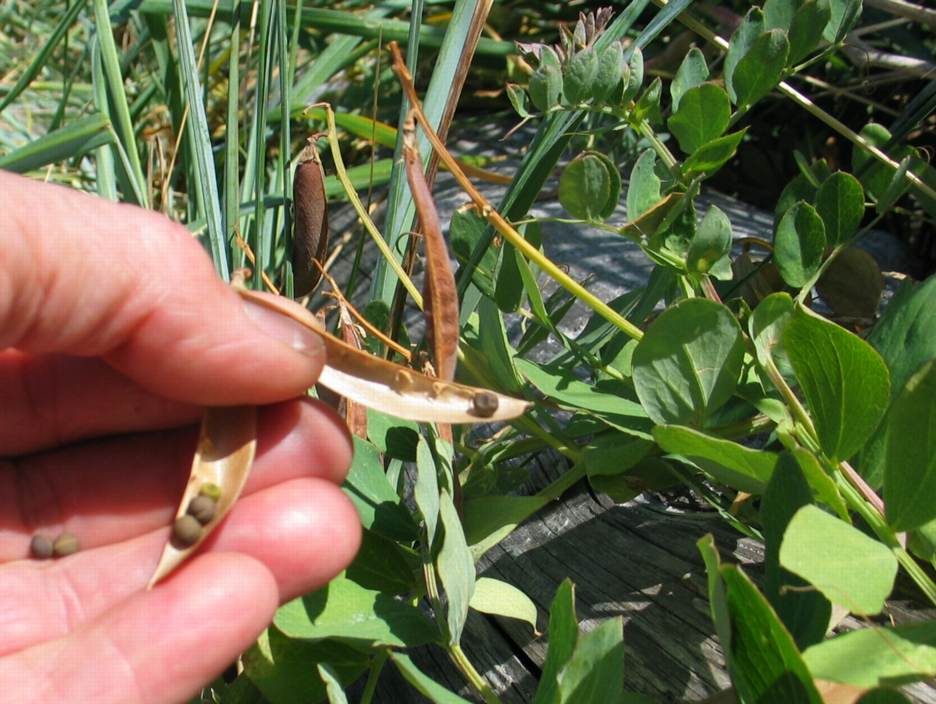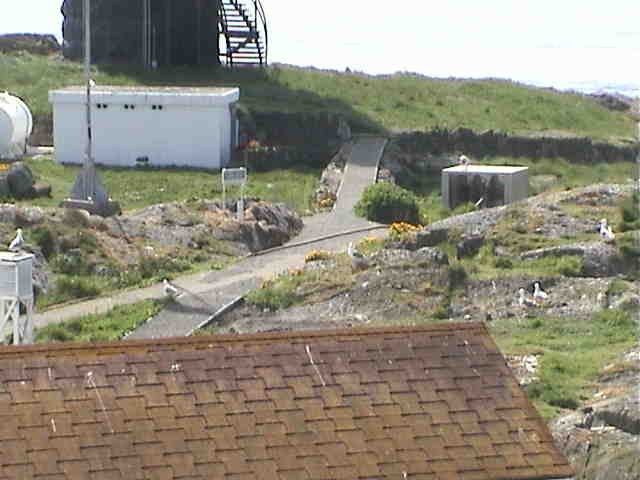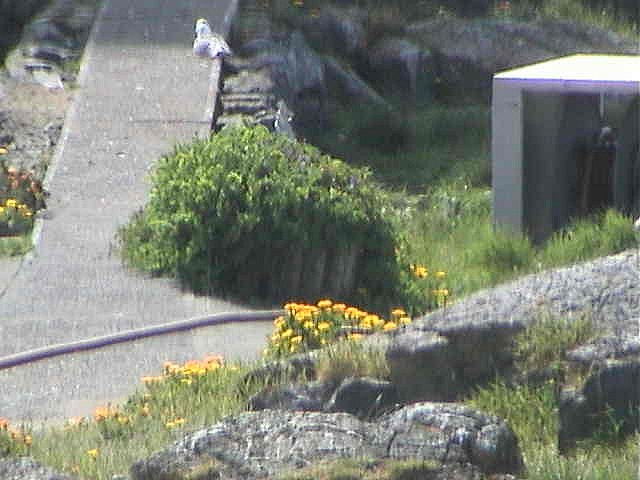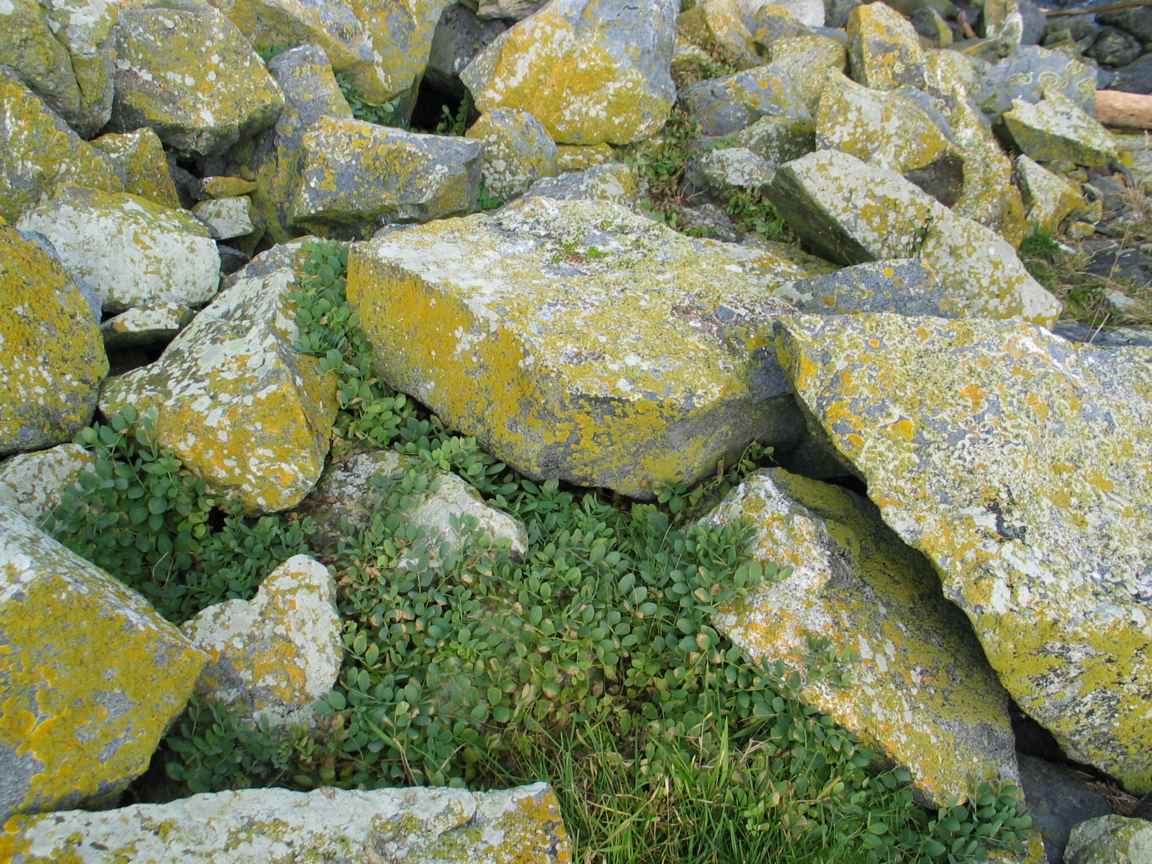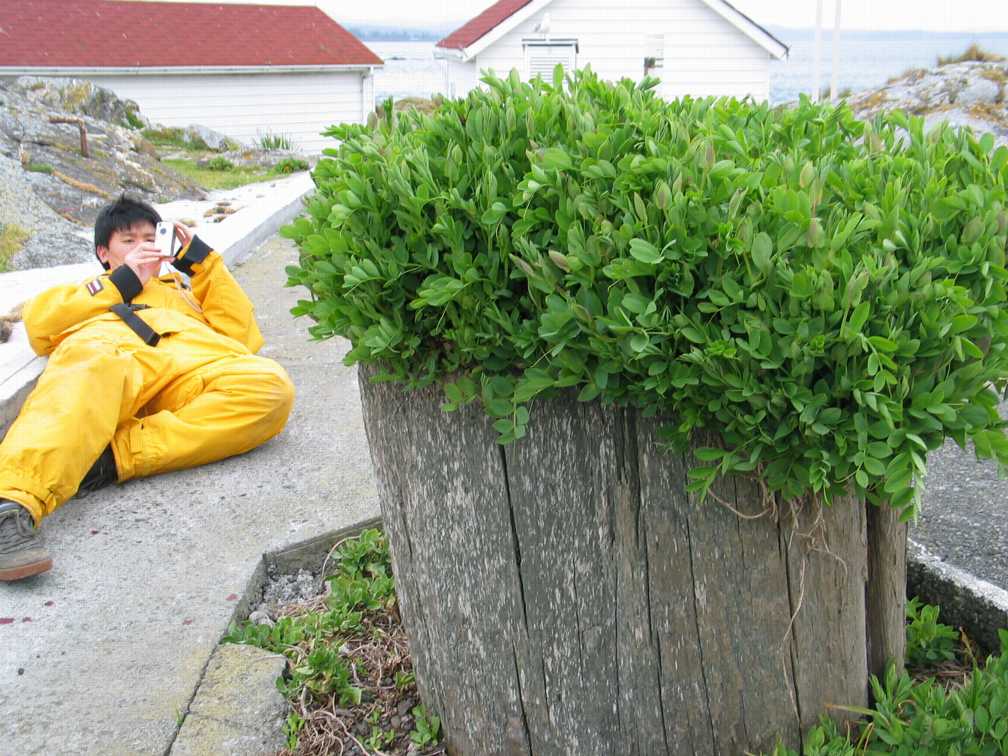Originally published in the Link, the Pearson College Newsmagazine- number 33, Jan10,2003 “Big Seal is Watching You”A Project Week
A Project week at Race Rocks Ecological Reserve —-
–photos by Jeremias Prassl (yr 29)
-
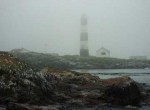
-
The tower in the fog
-

-
Ahmad at the top of the tower
-
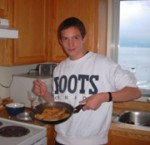
-
Jeremias Prassl cooking!
-
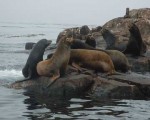
-
Sea lions
During Project Week November 4 to 11, 2002, three students lived on the lighthouse island of Race Rocks, in the marine protected area. Their project involved making observations to contribute to a data base, and doing some filming. Rosie Townsend, Ahmad Khalil, Jeremias Prassl (all year 29)
Day 1: The weather was marvellous, and at about 13.15 we arrived at Race Rocks, where we were welcomed by Mike Slater, the MPA guardian.
Day2: We held a meeting in the living room to determine what we would do during the next week. First of all there were the daily duties which had to be done at Race Rocks during the day: weather report to the Marina at 0800, morning engine check, salinity and sea water temperature check one hour before high tide, temperature and precipitation check at 1800, evening engine check. Extra to this we decided to do some movie projects. Filled with ideas we passed the afternoon by writing scripts for our projects.:
i) “Big Seal is Watching You” (a sort of “Big Brother” diary)
ii) Tide observation
iii) “How to Run Race Rocks” (a movie Mike asked us to do so he would not have to explain the daily duties over and over again)
iv) Documentation of the expected Department of National Defence Blasts on Bentinck Island and their influence on the sea mammals.
v) An Interview with the scientist which will come to RR every week for the next year.
vi) A short video giving a general introduction to RR
Day 3: Today we began the tide project. This involved taking clips of a fixed point on West Race Rock every hour between 0700 and 1700 to demonstrate the movement of the tides. We finished the editing and stored it on our results tape, so that is the first project that we have finished. We are also discovering that cooking should really be part of our project (creative experience?). Today Jeremias cooked a dish of liver, onions, and pears. Even Ahmad had a shot at cooking some rice, and for a first time in any kitchen. “It wasn’t completely disgraceful”, as Rosie stated. “In fact, it was really good”.
Day 4: We’re really beginning to notice how many whale watchers come past this island every day. There have been tons so far, and they often scare the animals into the water. Chris was supposed to come out with fuel today, but he decided not to risk it because of the predicted storm. At the end of the day, no storm has appeared but we are still hoping. If there is a big storm we intend to sit up in the lighthouse until it is over, or we run out of hot chocolate.
I personally really appreciate having an internet connection. Race Rocks is great, but I think that the isolation would drive me barmy if I couldn’t get in contact with the outside world. Our work today included all the daily duties and shooting all the footage we would need for “How to run RR”. We finished editing that today.
At the moment Ahmad is fasting for Ramadan which means that the only meals we eat as a group are our dinners. Actually, the other two have also been missing meals, since when we have a late breakfast after the morning duties, we don’t feel like eating lunch.
Day 5: The DND blasting was very interesting, especially for the more explosively-minded members of our party. At 0800 we set up our cameras. The first few blasts were not terribly exciting, but they progressively got louder over the day. When the loudest series began the seals and sea lions all stampeded into the water, leaving the island completely deserted. After our windows being shaken nearly to the point were they were about to break, we got scared (but decided not to jump in the Pacific).
Today for dinner we had fajitas that Rosie “cooked” (= take the fajitas and the seasoning out of the package, but them in the microwave, serve them with the enclosed salsa) which were good, even if she does say so herself.
Day 6: The blasting continued today, but still no storm. The effect on the animals was even more dramatic this morning. The first blast went off at around nine-thirty and the effect on the animals was instantaneous. They gradually crawled back while the DND people were on their lunch break, but they rushed straight back off again when they restarted.
Today there are some scientists on the island to study the impact of these tests. We did an interview with them for movie projects. Garry wanted us to ask some impertinent questions – I trust that we have done that to the best of our considerable ability.We think that we saw some whales from a distance, or maybe porpoises. We all hurried down to the docks with our cameras, and hopefully our photos will show more than a couple of fins. We trooped back again upon realising that our ecstasies were the subject of amused observation by the scientists in the lighthouse.
Right now we are listening to army communications on our VHF radio. As the storm is brewing around us and the darkness descends the feeling of a bad war movie is inescapable. If this diary seems to be largely concerned with food, we apologise, but we would like to have this project week officially recognised as a creative experience through cooking.
And so, good’bye for this week to readers of The Link. I hope that 2003 has started for you in health and happiness.
Eileen Dombrowski, Editor


